Blue Force Gear has published an article laying out ways to carry a Tourniquet along with a video featuring Chuck Pressburg.
SOARescue is proud to announce that we are now able to assist with and accept Air Force and Army Credentialing Opportunities On-Line Grants.
This change will allow our military students who are serving in the National Guard, Reserves, or Active Duty units to have access to our courses with fewer obstacles to manage. We hope to broaden the opportunity to the remaining branches soon.
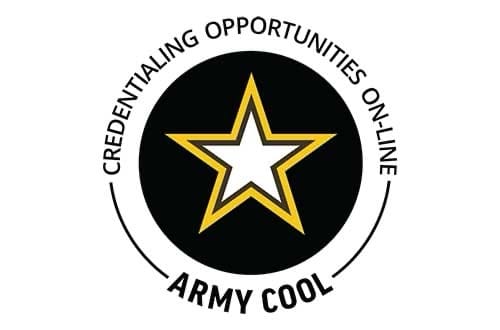
Need help navigating the COOL process? Our admin and training team is here to help! We can answer any of you questions (or at least point you in the direction of someone who can) and get you everything you need for a successful COOL application.
Our decision to move forward with becoming an agency who partners with COOL was fueled by our desire to make our training as accessible as possible to the practitioners who would most benefit from it. We know our students come from many walks of life and having the capability to further their education and skills can only benefit them as individuals and practitioners.
We know that our training can be a substantial investment for students paying their own tuition, so we’ve made every effort to keep our pricing as fair and transparent as possible. Pricing for all courses is available on our website and easily found next to the class on the schedule. We also offer payment plans and multi-student discounts for agencies. We’ve collected an instructional cadre that have incomparable real-world experience in the topics they are teaching and make every effort to provide each of our students with invaluable training.
SOARescue quality is the best in the industry and cannot be bested elsewhere.
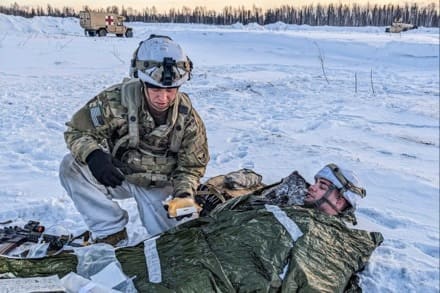
FORT DETRICK, Md. — A U.S. Army Medical Materiel Development Activity commercial partner received Emergency Use Authorization from the U.S. Food and Drug Administration for the Department of Defense to use octaplasLG Powder — a potentially lifesaving treatment option for blood replacement therapies in certain operational circumstances. Notice of the EUA for this product was received by the company, Octapharma USA, on Aug. 8, 2024.
USAMMDA’s Warfighter Protection and Acute Care Project Management Office, which has a Cooperative Research and Development Agreement with Octapharma USA, manages research and development efforts for several blood products, including Freeze-Dried Plasma, for the DoD. The EUA for octaplasLG Powder is a significant milestone in WPAC’s development mission, which includes blood replacement therapies for emergent care use during military operations and training.
“The WPAC team played a vital role in assisting our commercial partner under the CRADA, helping them navigate the EUA approval request and process to give our Warfighters another tool in their aid bag in far-forward environments,” said Kendra Lawrence, Ph.D., WPAC’s program manager. “While the octaplasLG Powder is not intended to replace current FDA-approved blood replacement therapies during emergency treatment, it does give medical commands and frontline providers added capabilities when facing possible shortages of traditional blood plasma in austere locations across the world.”
The EUA authorizes U.S. military medical commands to begin procuring octaplasLG Powder (blood types A and AB) and allows military medical personnel and other authorized providers to administer the lifesaving therapy to treat hemorrhage or coagulopathy when no other FDA-approved treatments, like fresh frozen plasma, are available — or when the use of traditional plasma is not practical in a compressed time continuum during military operations.
Blood loss is a significant threat to U.S. service members during combat operations and training, and treating hemorrhage or coagulopathy is imperative to saving the lives of the wounded and injured until medevac to higher echelons of care is arranged. Logistical and supply lines during future conflicts may stretch hundreds or thousands of miles, possibly causing shortages of FDA-approved blood products at and near the point of injury. Therapies like octaplasLG Powder are designed to serve as a stopgap when whole blood, fresh frozen plasma, or liquid plasma are in short supply, according to U.S. Army Maj. Andrea Mountney, WPAC’s military deputy project manager.
“During combat operations, whether in the Arctic, the Indo-Pacific, or other regions of interest, we will be facing the dual challenges of time and distance due to the austerity of those operating environments,” said Mountney. “Each passing second after a Service member is wounded or injured increases the complications caused by combat trauma. The longer it takes to begin blood replacement therapy, the higher the chances of mortality.
The WPAC team provides solutions for capability gaps, working with stakeholders across the DoD, academia, and industry to develop treatments that are affordable, reliable, and expeditionary,” she added. “Our goal is to meet the needs of the customer—the Joint Service end-user who may one day need these life-saving treatments. Solutions like octaplasLG Powder go a long way to equip our medical providers with the tools needed to treat the Warfighter during future operations.”
USAMMDA develops, delivers, and fields critical drugs, vaccines, biologics, devices, and medical support equipment to protect and preserve the lives of Warfighters across the globe. USAMMDA Project Managers guide the development of medical products for the U.S. Army Medical Department, other U.S. military services, the Joint Staff, the Defense Health Agency, and the U.S. Special Forces community. The process takes promising technology from the Department of Defense, industry, and academia to U.S. Forces, from the testing required for U.S. Food and Drug Administration approval or licensing to fielding and sustainment of the finished product. USAMMDA Project Management Offices will transition to a Program Executive Office under the Defense Health Agency, Deputy Assistant Director for Acquisition and Sustainment.
No official endorsement of third parties or their products is made or inferred.
By T.T. Parish
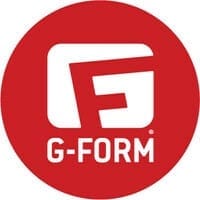
PROVIDENCE, R.I., Aug. 26, 2024 — G-Form®, the innovative technology protection brand, is proud to announce an additional Other Transaction Authority Agreement for Prototype (OTAp) with the U.S. Army Development Command – Soldier Center (DEVCOM SC). DEVCOM SC, the Army’s technology leader, ensures the dominance of Army capabilities by creating, integrating, and delivering technology-enabled solutions to our Soldiers. The $3 Million agreement follows the $1.2 Million OTAp awarded in 2023 to develop improved shock-attenuation products for knee, elbow and head protection.
The latest G-Form OTAp is to fund research and development of a prototype that will improve the blunt impact performance of the US Army’s combat helmets, while striving to improve long-duration comfort for soldiers. G-Form will use its proprietary rate-dependent protection technology, SmartFlex®, in combination with three-dimensional (3D) printed lattice structures, to design and develop an advanced helmet impact liner system. This project will create a liner system prototype that will mitigate forces that contribute to traumatic brain injuries and improve comfort, thus enhancing warfighter survivability.
“We are extremely excited about initiating this critically important project to design, develop and field protection systems for combat helmets which deliver next level performance combined with significantly improved comfort for our US Army warfighters,” stated Glen “Gava” Giovanucci, G-Form’s CEO.
For more information about G-Form, visit www.g-form.com.
Bunker Supply developed their ACCLIMATE body cooling system under Project Warcry in conjunction with Airman Innovator Capt Justin O’Brien.
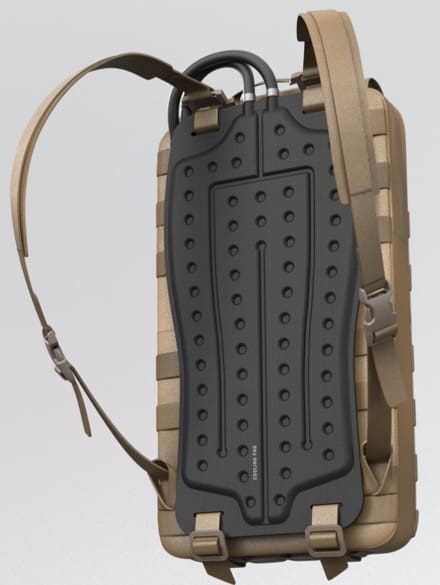
Project Warcry is their DoD-wide program that takes end-user ideas and accelerates the product development cycle and deployment of ideas by way of the Bunker Supply team’s expertise in engineering and manufacturing.
Heat injuries have resulted in at least 17 service member fatalities and costing over $1 billion from 2008 to 2019, particularly affecting recruit trainees and combat specific occupations. ACCLIMATE provides an active cooling solution that enhances warfighter performance and reduces heat-related injuries in extreme environments. ACCLIMATE provides these advantages in combatting heat injuries:
Decrease Temp By 32°F
Built to endure the demands of a full shift, increasing safety and endurance. In-field testing demonstrated an average internal vest temperature drop from 87.75°F to 55.75°F.
Up To 12 Hours Of Cooling
Built to endure the demands of a full shift, increasing safety and endurance.
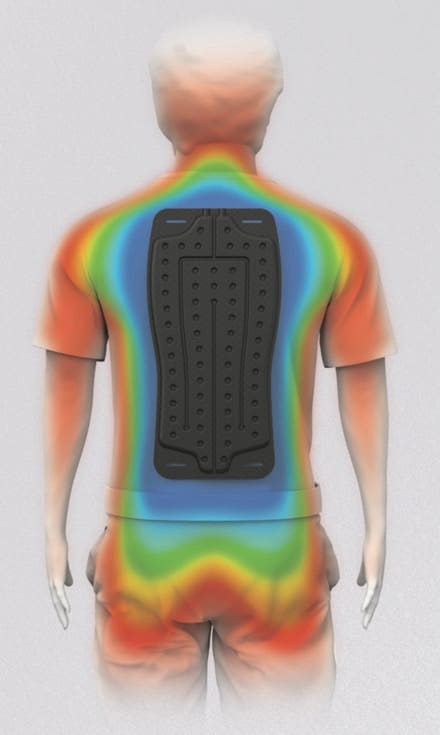
This powered system does this through a cooling pad at the back as well as a 3-liter reservoir containing water which is chilled before being returned to the cooling pad.
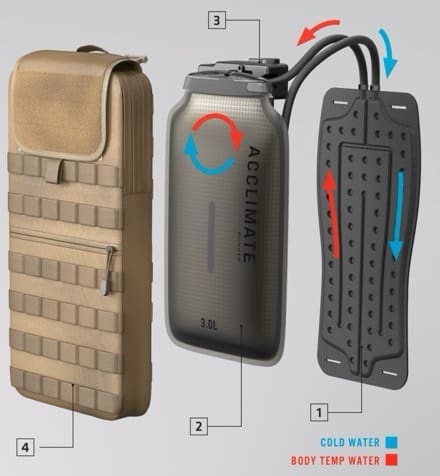
The system can be worn as a backpack or integrated into body armor. Currently available in Coyote, an OCP version will be offered in early 2025.
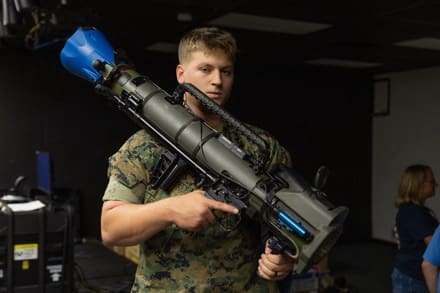
Marine Corps Base Quantico, Va. —
When Lt. Gen. Lewis “Chesty” Puller famously quipped, “Hit hard, hit fast, hit often,” there’s a good chance he had Marine Corps mortarmen in mind.
From the Spanish-American War through the 21st-century War on Terror, the Marine Corps has consistently employed artillery and other fire support systems to achieve decisive results. Today, as the Corps continues to modernize with Force Design as its strategic blueprint, its focus remains squarely on agility, precision, and rapid response—with capabilities like mortars and the Multi-Role Anti-Armor Anti-Personnel Weapon System– serving as proven force multipliers ahead of the future fight.
At Marine Corps Systems Command, the Program Manager for Training Systems (PM TRASYS) is fielding cutting-edge capabilities that allow Marines to train seamlessly on these fire support systems, prioritizing safety while ensuring the highest levels of readiness through training that closely mirrors real-world conditions.
In recent years, there has been growing concern that Marines and other servicemembers regularly exposed to heavy blasts—or blast overpressure (BOP) —have suffered a higher rate of adverse effects on brain health and cognitive performance.
In an August 8 memorandum, the Pentagon announced plans to strengthen the monitoring of cognitive health among service members through regular assessments and issued policy guidance to establish procedures and standards for training and operations.
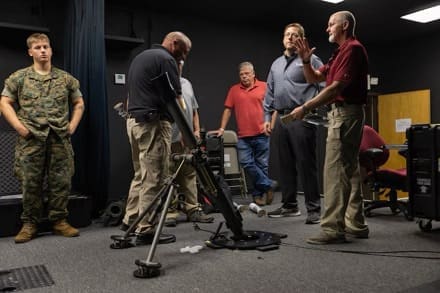
As stated by Deputy Defense Secretary Kathleen Hicks, “This policy is not meant to preclude or unreasonably restrict commanders from conducting mission-essential weapons training. Rather, this policy establishes requirements for practical risk management actions to mitigate and track BOP exposures across the DoD.”
Understanding the risks associated with repeated blast exposure, PM TRASYS has fielded the Indoor Simulated Marksmanship Trainer, which allows Marines across the installation to maintain their proficiency with various weapons systems without the need for live ammunition. This cutting-edge system is an advanced interactive audio/visual simulator that offers both basic and advanced marksmanship training, weapons employment drills, and tactical decision-making exercises for a range of weapons, including the M252 81 mm mortar and the iconic M3A1 MAAWS. The ISMT also offers shooting with Night Vision Goggles (NVGs), and the Annual Rifle Qualification (ARQ) courses fire was recently added to the database
“We developed the mortar and MAAWS ISMT in close collaboration with all stakeholders, including PM Infantry Weapons and the Navy’s Occupational and Environmental Medicine team, to ensure the form and fit are precise,” said Todd Butler, project officer for ISMT. “The goal is to provide Marines with ample repetitions to maintain and sharpen their skills. The simulated weapons are designed to closely replicate real ones, allowing for multiple repetitions and the firing of rounds without the cost of live ammunition. This approach ensures that Marines can sustain their lethality in the ISMT at any time, seven days a week.”
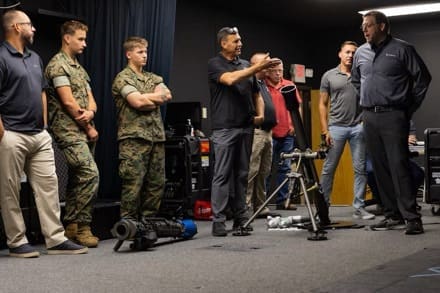
Central to the Marine Corps’ Project Tripoli—a groundbreaking initiative aimed at delivering a persistent, globally accessible Live, Virtual, and Constructive Training Environment (LVC-TE) across all domains and echelons—the mortar and MAAWS ISMT capabilities help sustain unit readiness in locations where range or training facilities are not available while also mitigating BOP concerns.
“From a safety perspective, we are committed to preventing negligent discharges,” said Tripp Elliott, MCSC System Safety Director. “We’re also focused on mitigating the impacts on hearing and preventing traumatic brain injuries. This has a huge impact. It’s crucial that while training, personnel do so correctly. For instance, when they drop a round into the mortar system, they must remember to move their hand, as in real life, a mortar will soon shoot out of that tube, and we want to avoid injuries like losing fingers.”
Ultimately, the ISMT exemplifies how constant communication between the fleet and the acquisition community allows for proactive adaptation to evolving Pentagon guidelines. By providing Marines with realistic training experiences that closely mimic live fire exercises—while mitigating the most significant risks, such as BOP exposure and potential injuries—the ISMT enhances safety and operational readiness. Additionally, each use of the ISMT conserves valuable resources, reducing costs without compromising the Marine Corps’ lethal capabilities. In an era where every shot counts, ISMT ensures the warfighter remains sharp, ready, and as lethal as ever.
By Johannes Schmidt, MCSC Office of Public Affairs and Communication, Marine Corps Systems Command
The Backyard Adventure Raccoon First Aid Kit from Adventure Medical Kits is a fun way to get the little ones (and adults) to start carrying basic first aid supplies.
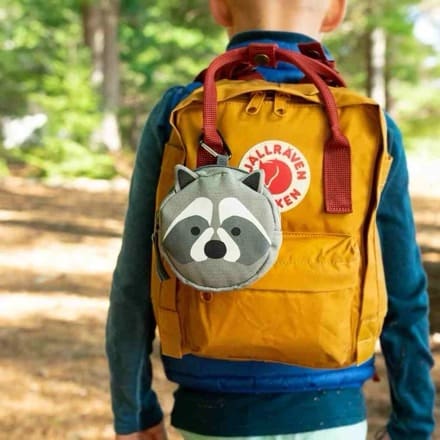
They are relatively inexpensive at $12.00 contain items which cover most of the small cuts and scrapes kids encounter while enjoying the outdoors:
3 – Hand Sanitizer, 0.9 g
20 – Adhesive Bandage, Fabric, 1″ x 3″
3 – Triple Antibiotic, Single Use
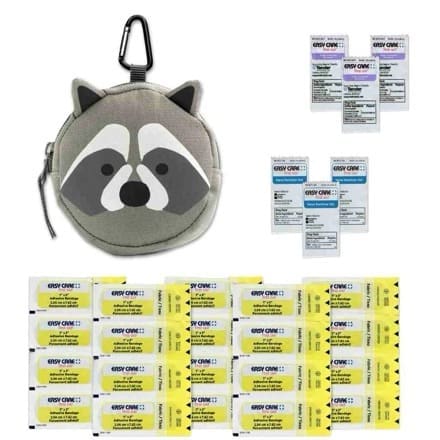
The zippered pouch features a mini-carabiner to attach to most packs or belt loops.
In addition to the Raccoon, these kits are available as a Bear, Fox, Llama, Owl, Sloth, and even a Unicorn.
dventuremedicalkits.com/products/backyard-adventure-raccoon-first-aid-kit
CANNON AIR FORCE BASE, N.M. (AFNS) —
The 27th Special Operations Wing hosted the 15th annual Medic Rodeo at Cannon Air Force Base, Aug. 12-15. Eighteen teams from across the Air Force traveled to Curry County for several days of challenging training scenarios intended to give them tactical combat casualty care training.
The event took place at the Cannon Permanent Exercise Facility and Melrose Air Force Range. Objectives at hand were directly relevant to the Air Force-wide Medic-X strategic initiative that drives proficiency in 52 skills for every Air Force medic – including those not directly involved in patient care. These skills are especially critical to ensure the Air Force’s readiness for the next fight.
Deployed scenarios were split into three segments that mirrored TCCC’s phases: Care Under Fire, Tactical Field Care, and Prolonged Field Care.
“You can tell what we are doing with our TCCC is paying dividends,” said Col. Melissa Dooley, Air Force Special Operations Command surgeon general. “That inspires confidence when I think about the future fight and great power competition.”
After two days of challenges and scenarios, all the teams were brought together to compete in the Air Commando Challenge, a physically intense relay in the sweltering heat.
“We train to fail,” said Tech. Sgt. Christopher Gilbert, independent duty medical technician with the 86th Medical Group at Ramstein Air Base, Germany. “So, when we do it for real, we don’t fail.”
Once the competition was over, one final challenge was thrown at the medics – a chaotic mass casualty exercise intended to see the various teams work together to save lives. The exercise took place in a dark hangar with nearly 50 casualties to assess, treat, and save.
After days of mental and physical challenges, competitors from Eglin AFB’s 96th Medical Group emerged victorious, followed closely by Ellsworth AFB’s 28th Medical Group in second place. The team from Cannon AFB’s 27th Special Operations Medical Group came in third.
Last year’s competition brought the U.S. Army to assist the 27th SOMDG’s IDMTs as evaluators. This year, a team of U.S. Navy and U.S. Marine Corps medics were invited to help provide feedback and joint perspective, including the incorporation of the Marine Corps Valkyrie Threshold blood transfusion, which provides whole blood as a resuscitation fluid and boosts the chances of survival for casualties that are hemorrhaging.
“I’m excited to see how Medic Rodeo continues to evolve and incorporate Medic-X and our TCCC training,” Dooley said. “Competition always motivates us and accelerates us to the level we need to be.”
By Senior Airman Drew Cyburt, 27th Special Operations Wing Public Affairs